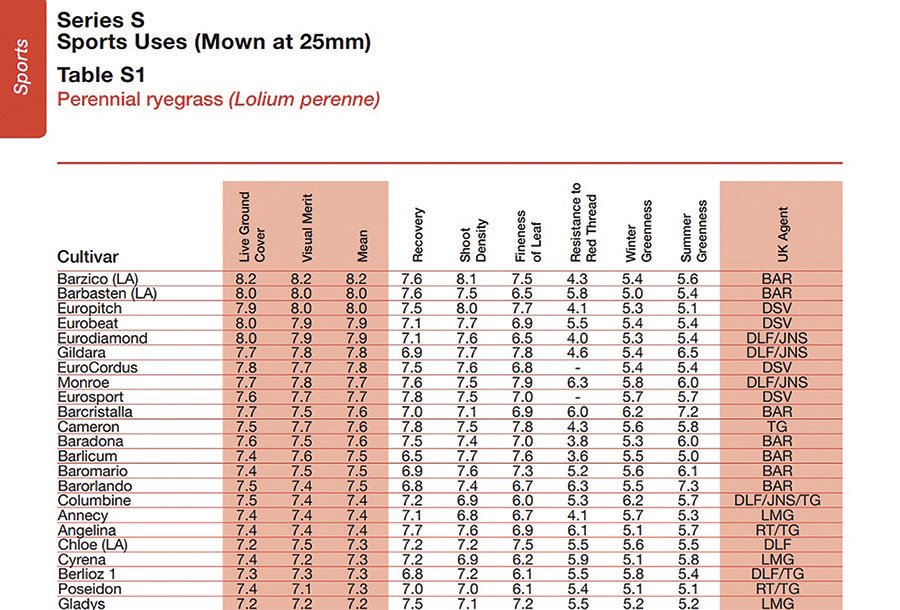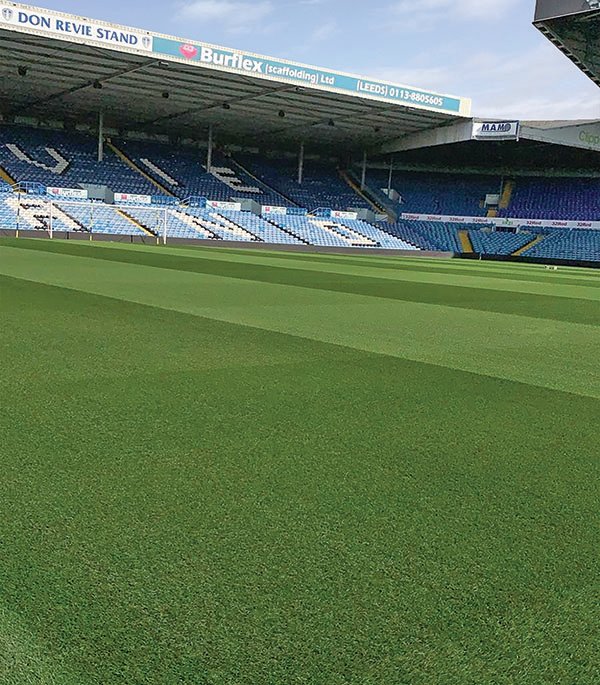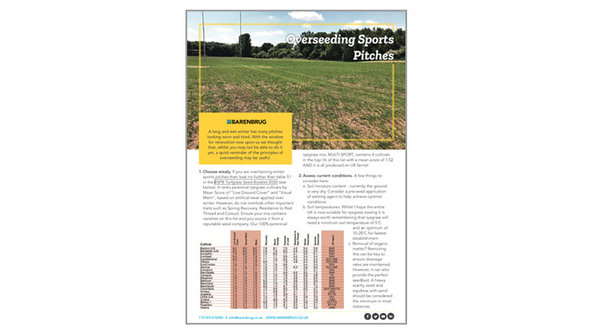A long and wet winter has many pitches looking worn and tired. With the window for renovation now upon us we thought that, whilst you may not be able to do it yet, a quick reminder of the principles of overseeding may be useful.
1. Choose wisely. If you are maintaining winter sports pitches then look no further than table S1 in the BSPB Turfgrass Seed Booklet 2020 (see below). It ranks perennial ryegrass cultivars by Mean Score of “Live Ground Cover” and “Visual Merit”, based on artificial wear applied over winter. However, do not overlook other important traits such as Spring Recovery, Resistance to Red Thread and Colour). Ensure your mix contains varieties on this list and you source it from a reputable seed company. Our 100% perennial ryegrass mix, MULTI SPORT, contains 4 cultivars in the top-16 of this list with a mean score of 7.52 AND it is all produced on UK farms!

2. Assess current conditions. A few things to consider here:
a. Soil moisture content - currently the ground is very dry. Consider a pre-seed application of wetting agent to help achieve optimal conditions
b. Soil temperatures. Whilst I hope the entire UK is now suitable for ryegrass sowing it is always worth remembering that ryegrass will need a minimum soil temperature of 5 ̊C and an optimum of 10-20 ̊C for fastest establishment
c. Removal of organic matter? Removing this can be key to ensure drainage rates are maintained. However, it can also provide the perfect seedbed. A heavy scarify, seed and topdress with sand should be considered the minimum in most instances.
3. Put the seed to bed. Seed needs to be planted using a machine that is able to sow the seed to the correct depth. Seed sown on the surface has little chance of survival. This area is far more prone to drying winds mean it could very quickly desiccate after germination. Disc seeders are generally preferred as it can get the seed much deeper where the soil is less prone to rapid drying and good soil contact can be achieved. As a reminder, below are minimum recommended rates for overseeding:

4. THE most important rule for germination.
This cannot be stressed enough. Keeping seed and surrounding soil consistently moist is THE determining factor in successful germination. We have been taught that most seed species need three things for germination. Oxygen, Sufficient Temperature and Water. All too often we are questioned on poor germination, 99% of the time the answer is lack of water. Take care during warm windy conditions as seed may need watered more the once per day to ensure continuous imbibition.
5. Aftercare. So, you have done all the hard work and are starting to see nice lines of fresh seedlings. Satisfying I am sure you will agree? Now is not the time to sit back though. Give the area a roll to smooth the surface and promote tillering. Ensure you keep up watering although you will no longer need to do it more than once per day. A balanced fertiliser preferably without Iron should be applied to help seed to grow and thicken out. If in doubt check the label or speak to a qualified advisor. Once the new grass is growing, frequent mowing will further help to encourage tillering and establishment.
THAT’S IT, a simple task that if done correctly can help your pitch perform to its best all year. Be patient and soon you will be mowing those stripes in again!
Stay Safe everyone!







